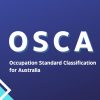In ANZSCO, the skill levels are used to classify occupations based on the level of education, training, and experience required to work in that occupation.
Skill Level is rated from 1 to 5.
Skill Level 1
Occupations at Skill Level 1 have a level of skill commensurate with a bachelor degree or higher qualification. At least five years of relevant experience may substitute for the formal qualification. In some instances relevant experience and/or on-the-job training may be required in addition to the formal qualification.
Skill Level 2
Occupations at Skill Level 2 have a level of skill commensurate with one of the following:
- NZQF Diploma or
- AQF Associate Degree, Advanced Diploma or Diploma.
At least three years of relevant experience may substitute for the formal qualifications listed above. In some instances relevant experience and/or on-the-job training may be required in addition to the formal qualification.
Skill Level 3
Occupations at Skill Level 3 have a level of skill commensurate with one of the following:
- NZQF Level 4 qualification
- AQF Certificate IV or
- AQF Certificate III including at least two years of on-the-job training.
At least three years of relevant experience may substitute for the formal qualifications listed above. In some instances relevant experience and/or on-the-job training may be required in addition to the formal qualification.
Skill Level 4
Occupations at Skill Level 4 have a level of skill commensurate with one of the following:
- NZQF Level 2 or 3 qualification or
- AQF Certificate II or III.
At least one year of relevant experience may substitute for the formal qualifications listed above. In some instances relevant experience may be required in addition to the formal qualification.
Skill Level 5
Occupations at Skill Level 5 have a level of skill commensurate with one of the following:
- NZQF Level 1 qualification
- AQF Certificate I or
- Compulsory secondary education.
For some occupations a short period of on-the-job training may be required in addition to or instead of the formal qualification.
In some instances, no formal qualification or on-the-job training may be required.








